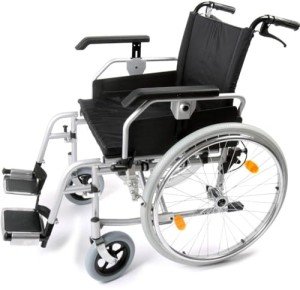The Biggest Sources Of Inspiration Of Bariatric Wheelchair 24 Inch Seat

Bariatric Wheelchair Seat Width
Seat Width
Having the right seat width is necessary to wheelchair users who invest longer durations in their chairs. Too narrow a seat will cause pressure on the hips and thighs which might cause sores or pressure points. Having too large a seat can also make it tough for the user to reach the hand rims to move themselves or maneuver in little spaces.
To measure the appropriate seat width an individual would sit on a chair typically and have their measurement taken across their lap at the widest point which is normally their hips. A wheelchair measuring tape can be utilized to measure this, however a lawn stick is chosen as it avoids individuals from covering the tape around their hips which would provide an incorrect result.
The standard wheelchair seat width is 16" (narrow grownup), 18" (standard grownup), and 20" (broad grownup). For bariatric clients, a 24" seat is available. This heavy-duty extra large bariatric wheelchair from Medline includes swing-away footrests, a carbon steel frame with rust- and chip-resistant chrome plating, and easy-to-clean vinyl upholstery. It has a weight capacity of 500 pounds.
Seat Depth
Typically, the seat depth of a bariatric wheelchair was included 2" to the measurement taken at the user's best point (typically their hips). This was meant to accommodate additional layers of clothes that may be worn during winter. Nevertheless, this practice is ending up being less common as wheelchair users are able to spend more time inside and are not using long coats. This makes the seat depth of a chair less important when choosing a bariatric wheelchair. However, it is still crucial to select an option that offers adequate support for bigger users.
The Medline folding extra large bariatric manual wheelchair features a comfy 24" seat width and a durable slide tube silver vein frame. It also has an adjustable axle and tool-free elevating legrests.

Seat Height
When it comes to figuring out the correct wheelchair seat width you should always determine from the user's best point which is usually their hips. You will likewise need to think about whether the user is going to be wearing a winter season coat as this may include 2" to the width required.
When a wheelchair is in usage it need to only be run on level surfaces with the wheel locks totally engaged. This is to prevent the chair from being able to move inclines that are 10 degrees or higher. It is likewise essential to keep in mind that any activity that might move the center of gravity in the chair need to be made with care. This includes reaching for products that require the individual to lean out of their seat or attempting to stand up from it.
Whenever you have the chair in use it is recommended that you routinely check it for damage and oil any areas that are considered required. For instance, the casters ought to be lubed by getting rid of the caster fork and utilizing a multi-purpose grease to apply to the caster stem bearings. Also, the foot plates can be adjusted by loosening the bolt and then moving them to the preferred position. This permits the feet to sit conveniently on the footplate and prevents any pressure points from forming. This can be really unpleasant for the user and if left ignored, can lead to pressure sores.
Weight Capacity
Bariatric wheelchairs are developed to support more weight than basic wheelchairs. This makes them tougher and better geared up to deal with falls. They are also typically bigger and larger, making them less maneuverable in tight spaces than basic wheelchairs. They require lorries with unique ramps and lifts to load them, as well as drivers who know how to best transport them from one area to the next.
When picking a wheelchair, consider its weight capacity as it will be the main determining consider whether it will accommodate your traveler's needs. The weight capacity of the chair is typically noted as a fixed load, suggesting that it suggests the amount of weight the chair can easily hold while stalling. However, some producers likewise list an active load that is based on a drop test and can simulate the impact of somebody sitting down in the chair. This may be a more reputable measurement of the weight limit, depending upon your needs.
If heavy duty bariatric wheelchair plan to perform activities that shift your center of gravity in the seat (such as reaching for things), be sure to have front casters pointed in a forward direction and wheel locks engaged so the chair will not topple. Likewise, examine that casters are lubed frequently to prevent extreme wear and abrasions. The lubrication procedure includes eliminating the fork, separating the caster from the wheel, and greasing the caster stem bearings with premium multi-purpose grease.
